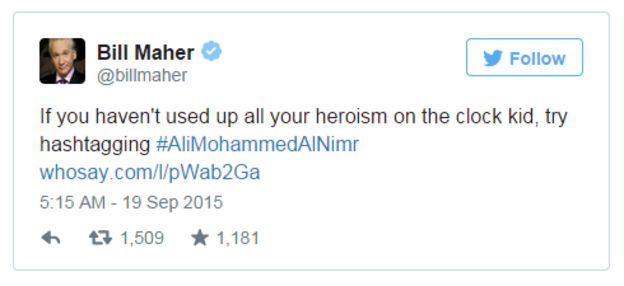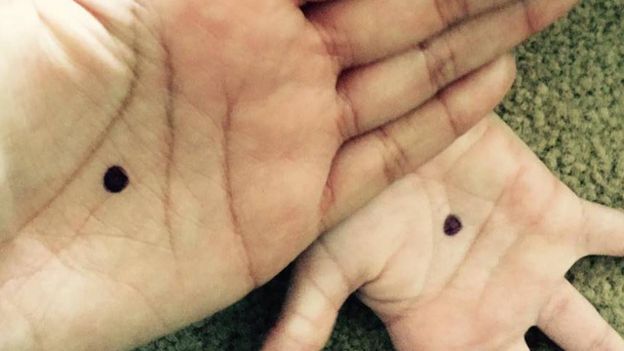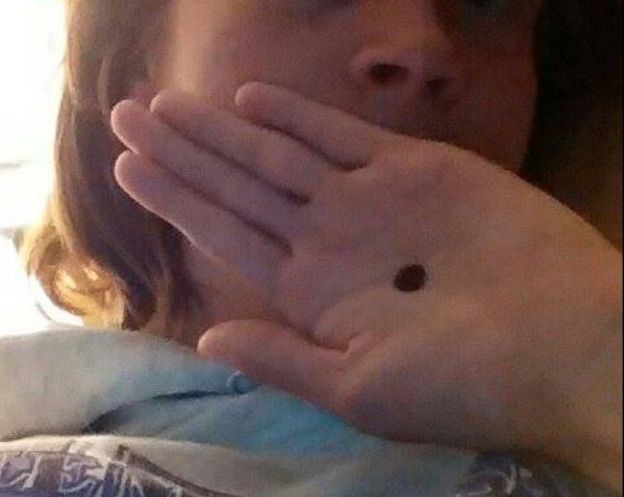
Activists are organising online to support a young man sentenced to death in Saudi Arabia, but the conversation within the country is split along sectarian lines.
Ali Mohammed Baqir al-Nimr could be beheaded at any time, and now activists are rallying to highlight his case online. He's accused of a variety of crimes against the state, all stemming from protests he took part in against the Saudi government. His appeals against a death sentence are exhausted.
Al-Nimr was accused of taking part of anti-government protests in the eastern part of the country in 2011 (involving the country's Shia Muslim minority and sometimes called"Saudi's Secret Uprising") and was arrested the following year. State media later reported he was found guilty of a long list of crimes including sedition, breaking allegiance to the king, rioting, using petrol bombs against security patrols, robbing a pharmacy and more. He was 17 years old at the time of his arrest. The UNConvention on the Rights of the Child, to which Saudi Arabia is a signatory, forbids capital punishment for offences committed by people under the age of 18. UN human rights experts also say al-Nimr was tortured and did not receive a fair trial.
So why he is he trending on Twitter now? It was sparked over the weekend by American comic Bill Maher, who is well known for controversial views on a range of subjects, including Islam and religion. On Friday on his show Real Time on HBO, he held a discussion about Ahmed Mohammed, the Texas boy who was questioned by police after bringing a clock into school. Maher defended the actions of the police and school authorities, and in a widely-shared tweet the next day he mentioned the incident again and gave a link to a story about al-Nimr's case:
 Twitter
Twitter
That kicked off the conversation, but the trend really spiked big on Wednesday. Al-Nimr's name has now been mentioned 15,000 times in English and 21,000 times in Arabic over the past few days, with liberal and secular activists and human rights organisations leading the charge. "Our leading ally in the region crucify government critics," tweeted one British blogger. "Wake up world." Under Saudi law, the punishment of crucifixion to which al-Nimr was sentenced is actually a beheading, followed by the public display of the body. Others online linked the case with the recent appointment of a Saudi ambassador as chair of a panel of independent experts on the UN Human Rights Council. "Saudi Arabia chosen to head UN's human's rights panel & yet they're about to behead 21yr activist," one user commented.
Another big topic of discussion online is the sectarian aspect of the case. Al-Nimr is the nephew of a prominent Shia cleric, who has also been sentenced to death. Eastern Province, where the protests occurred, has a Shia majority that has long complained of marginalisation at the hands of the Sunni ruling family. Inside Saudi Arabia, many Shia are expressing support for Ali al-Nimr, while some Sunnis are defending the handling of the case.
"We should execute any Shia who offends us," said one Sunni. "They should be grateful that we are letting them stay in Saudi Arabia." But a Shia Twitter user commented: "Where are the religious clerics calling for national unity? Wouldn't the death of this boy hurt this so-called unity?"
Next story: Can a black dot on a hand help tackle domestic violence?
 Black dot campaign
Black dot campaign
The idea of a black dot on victims' hands, to help tackle domestic violence, has been widely spread on Facebook - but also heavily criticised. Now, its founder defends the idea.READ MORE Below:
The idea of a black dot on victims' hands, to help tackle domestic violence, has been widely spread on Facebook - but also heavily criticised. Now, its founder defends the idea.
The idea behind the Black Dot campaign is this: victims of domestic violence can draw a black dot on their hand as a silent signal. Once it becomes widely enough understood, people who see the dot on their friends' hands can approach them and have a conversation about abuse.
It's certainly now widely known: the campaign page racked up 40,000 likes, with many of its posts shared even more widely than that, and the founder says Facebook's statistics indicate it's been seen by millions (although the page was later taken down).
But as the Black Dot has garnered media attention, it's also been criticised by people who worry that a specific symbol highlighting domestic violence would draw unwanted attention to victims - and thus risk the wrath of their abusers. Others have pointed out that professionals and support agencies won't have received training on what to do when spotting someone with a black dot on their hand.
"It seems a good idea but with wide coverage then the abusers will know what this thing means," one man wrote on the campaign's Facebook page.
Now, the woman behind the campaign says critics have missed the point. In fact, she never meant for people to post selfies of their hands with a dot.
The founder is a British woman who wishes to remain anonymous because of her history as a domestic abuse victim. She told BBC Trending that although it started on Facebook, the campaign was never about encouraging abuse victims to post pictures of themselves online.
"I imagined it as a tool to start face-to-face conversations between friends, or with professionals," she told BBC Trending. "I was basing it on my experiences and I was thinking, how could I prompt people to talk about domestic violence? A black dot is easy to make, and easy to erase. As a female, you could go to the toilet, draw one on with mascara, and then later wipe it out. Being in the centre of your palm, you could close your palm and hide it from view.
"As a way of seeking help, it's not going to be a solution for everybody. As a victim, you know what triggers your abuser," she says. "So if it's not safe to draw a black dot, don't do it. Just because you're a victim doesn't mean you're stupid - you know yourself what is safe and what is not safe."
 Black Dot campaign
Black Dot campaign
The founder says she's been overwhelmed and appreciative of supportive messages that she has received from people around the world, but that instead of drawing black dots in solidarity, the campaign is now encouraging supporters who aren't at immediate risk of abuse to write "Say no to domestic violence" on their hands to avoid confusion.
"When things go viral and worldwide, you kind of lose control. A lot of survivors are putting their dots on their hand, but that's not what the original idea was," she says. Doctors, police and social workers, she hopes, will become more aware of what the black dot means, and there's no "special training" needed - at that point their existing professional training will kick in.
"Human nature means that in a lot of situations, we don't intervene," the founder says. "We're polite, and a lot of victims are in a very lonely and scary place. It makes it very difficult to reach out and talk to people. The point of this campaign is to overcome those barriers."
 Black Dot campaign
Black Dot campaign
The founder says she's also received hundreds of messages from people who say they've been helped since the campaign began. Some have used the black dot technique, others have simply heard about the campaign and been prompted to seek help because of it. On the campaign's Facebook page one woman related a story of an encounter with a hospital worker.
"I had to have an examination so the consultant asked me to lie on the bed and drew the curtain. I leant over and took the pen out of his pocket, pulled his hand over to me and wrote HELP ME. I didn't have to say a word. This campaign gave me the strength and the idea how to ask for help," the message said. "I am now safe somewhere else thanks to that consultant and the black dot campaign."
Alice Stride, a spokeswoman for Women's Aid, which along with the charity Refugeruns the UK's National Domestic Violence Helpline, cautioned against universal adoption of the black dot.
"We would remind people of how different perpetrators can behave," Stride says. "In many situations - the perpetrators do monitor victims very closely. If there's any noticeable change, for instance if they forget to wash the dot off their hand, that could lead to further abuse."
Still, she says, the organisation welcomes the black dot campaign, and it might be an effective way for many people to get help. "It's very difficult for women to speak out about their abuse, they're worried they won't be believed," Stride says. "Being able to communicate is the first step, and this campaign provides women another way to do that."
BBC Trending has previously looked at the debate over publicising allegations of domestic violence online and whether social media can really be a useful tool.

The lives of random strangers are being documented on blogs around the world that imitate the style of Humans of New York, and the trend is now established across the British Isles.



No comments:
Post a Comment